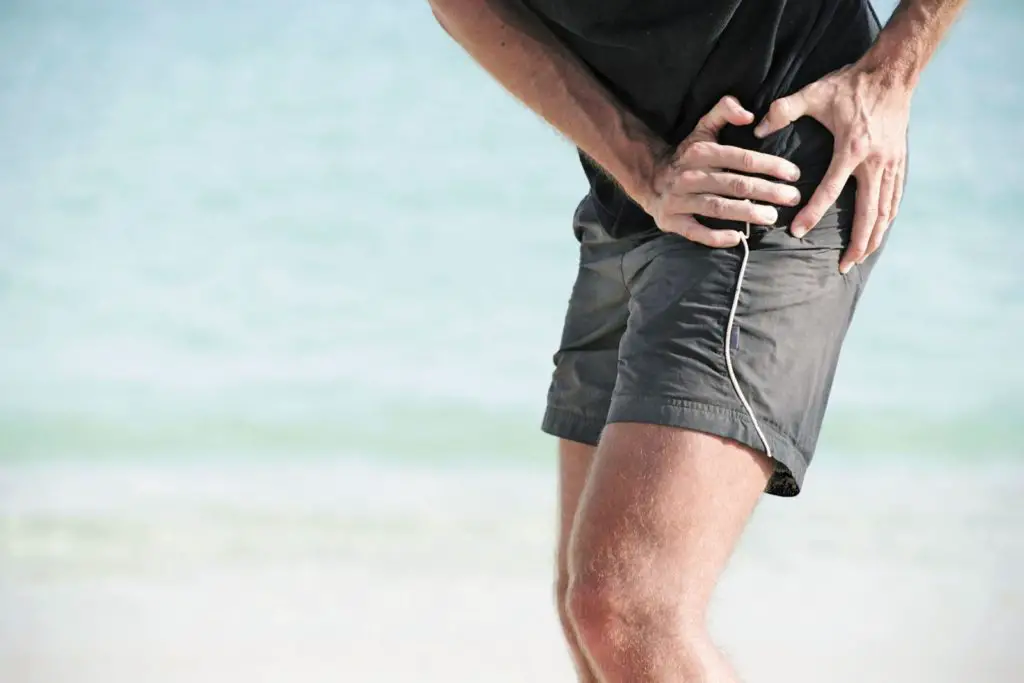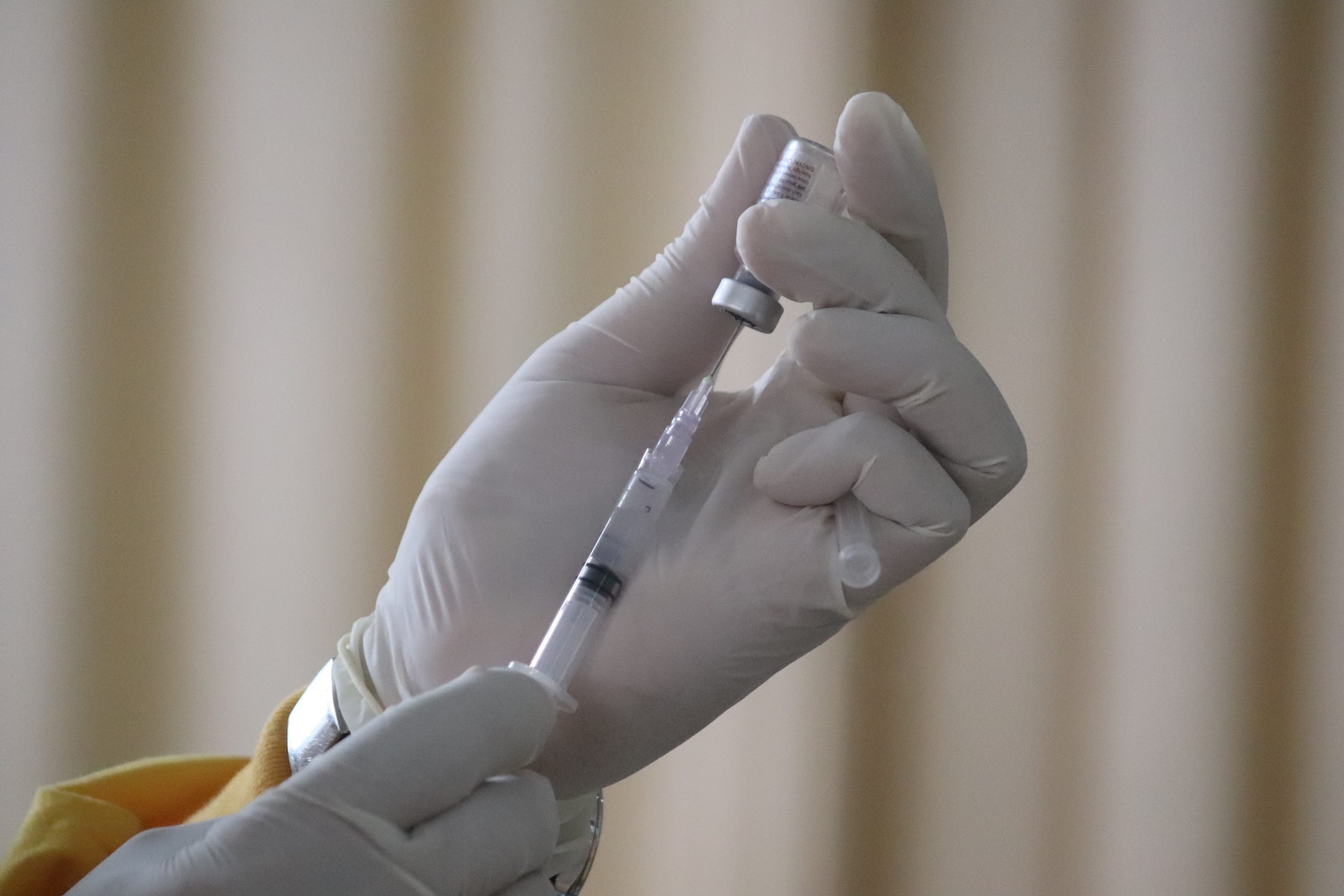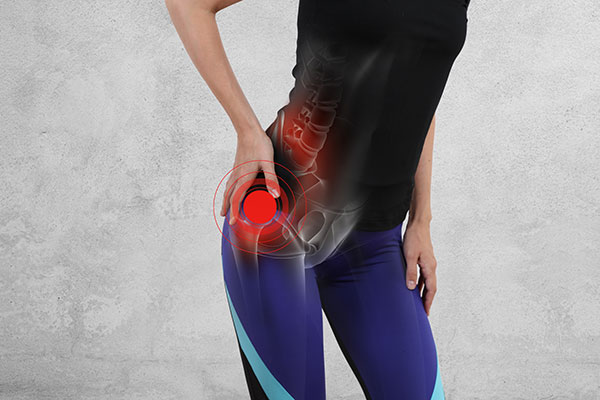Article reviewed and approved by Dr. Ibtissama Boukas, physician specializing in family medicine
La hip bursitis is a frequent pathology in orthopedics. It results in pain on the outer side of the thigh and hip. If you feel pain on the outer side of the thigh and hip in addition to being an athlete, do not exclude hip bursitis!
This disease often appears in joints that have repeatedly performed similar movements: the shoulder, the elbow and the hip. You may also have bursitis in the knee, heel, and base of your big toe.
This article will focus on hip bursitis by clearly defining it. He will also discuss the causes, the symptoms, the means of diagnosis and especially the means of treatment.
Definition
Hip bursitis is a painful condition which is defined as inflammation of one of the bursae around the hip. The bursa is a small pocket filled with synovial fluid that serves to lubricate the space between the tendons and the bone. It facilitates movement. The function of the bursa is to reduce friction on a bony prominence.
At the level of the hip joint, there are several bursa which may be the cause of bursitis, but the trochanteric bursitis is most often involved. The greater trochanter is a bony prominence on the outside of the hip and where the tendons attach.
Causes
Bursitis involves a inflammation of the bursa serosa, muscles and tendons as they slide in front of the hip. It is thought to be an overuse condition caused by increased friction of the iliotibial band (the set of muscles and tendons connecting the hip to the knee via the outer side of the thigh) on the hip. This may be due to trauma or a change in gait mechanics. It is more common in women than in men and usually occurs between the fourth and sixth decades of life.
Hip bursitis can sometimes develop after a fall or blow to the hip, but is most often caused by mechanical issues such as a previous hip injury/surgery or poor hip mobility. The friction of hip tendons moving repetitively over the bursa causes irritation, especially during high-impact activities like running.
Bursitis is often caused by repetitive movements or bad postures that put pressure on the bursae around a joint.
Frequent examples are:
- Throwing a baseball or lifting something over your head repeatedly.
- Lean on your elbows for long hours.
- Extended kneeling for tasks such as laying carpets or scrubbing floors.
Other causes include injury or trauma to the affected area, inflammatory arthritis such as rheumatoid arthritis, gout, and infections.
Risk factors
Anyone can develop bursitis, but certain factors can increase the risk:
- Age : Bursitis becomes more common with aging.
- Professions or hobbies : If your job or hobby requires repetitive movements or pressure on particular bursae, your risk of developing bursitis increases. Examples include carpet laying, tile laying, gardening, painting and manipulation of a musical instrument.
- Other medical conditions : Certain systemic diseases and conditions such as rheumatoid arthritis, gout and diabetes, increase the risk of developing bursitis.
- The topics in overweight can develop bursitis in the hip and also in the knee.
Symptoms of the disease
Here are the signs you experience when you have hip bursitis.
- The hip becomes stiff or sore
- You feel pain when you move or press on the affected area
- The hip begins to swell and redden.
Do not hesitate to go to your doctor if you have:
- of debilitating joint pain
- a sudden inability to move the hip
- un excessive swelling, a redness, a bruise ou skin rash in the affected area
- sharp or stabbing pain, especially when you exercise
- a fever.
Diagnostic
Doctors can often diagnose bursitis of the hip based on medical history and physical examination. Work-ups, if necessary, may include biological work-up and imaging.
Physical examination
In general, hip bursitis is diagnosed by a history (questioning) and physical examination. The history should include the patient's age, chief complaint, symptom onset, duration, course, aggravating/relieving factors, and any previous treatment, including the patient's history.
On physical examination, lateral pain that worsens on direct palpation is found. The pain also appears on walking on one leg, hip abduction with resistance. There is also an inability to lie down on the affected side in the patient.
Paraclinical assessments
Your doctor may order blood tests or a fluid analysis of the inflamed bursa. This serves to determine the cause of inflammation and joint pain.
X-ray images of the hip cannot definitively diagnose bursitis, but they can help rule out other causes of your condition.
The use of ultrasound or MRI is necessary, even essential if bursitis cannot be easily diagnosed by a single physical examination. MRI may show fluid and inflammation under the iliotibial band and gluteus maximus next to the hip.
Differential diagnosis
Bursitis is often confused with arthritis because joint pain is a common symptom of both conditions. There are different types of arthritis that cause inflammation of the joints. These include the autoimmune response of rheumatoid arthritis or breakdown of joint cartilage in thedegenerative arthritis.
(See the article on osteoarthritis of the hip)
Treatments
Treatment usually involves relieving pain on the affected part and protecting it from further shocks. In most cases, pain from hip bursitis resolves within a few weeks with proper treatment, but recurrent flare-ups of bursitis are common.
The main goal of treatment for hip bursitis is therefore to reduce pain and swelling. Once a patient has been diagnosed with hip bursitis, their doctor will often recommend reducing or modifying all activities that cause the pain.
conservatives
Conservative measures, such as rest, ice, warmth and taking painkillers or nonsteroidal anti-inflammatory drugs (NSAIDs) are highly recommended. If the inflammation of your bursitis is caused by an infection, your doctor may prescribe an antibiotic.
You can adapt the following tips to ease the pain of bursitis:
- Rest and do not overuse the affected area.
- Apply ice to reduce swelling for the first 48 hours after symptoms appear.
- Apply dry or moist heat, such as a heating pillow or taking a hot bath.
While rest and conservative care can help reduce symptoms of bursitis, this treatment process is time-consuming and can restrict your activity.
Invasive
In some cases, doctors may recommend cortisone injections to speed up the healing process. Physical therapy (physiotherapy) programs can also help reduce pain and swelling afterwards.
Indeed, a home stretching regimen will often be prescribed. If a home program fails, often formal physical therapy consisting of stretching, rolling, strengthening will be helpful.
If conservative measures do not work, it is worth turning to other means of healing.
Infiltration
injection of corticosteroids is another non-operative treatment option. A corticosteroid injected into the bursa can relieve pain and inflammation in the hip. The effectiveness of this treatment is generally rapid. In many cases, a single injection is sufficient.
A successful steroid injection usually provides relief for about four to six months. Bursitis may go away completely and symptoms are unlikely to reoccur. However, if the trauma that caused bursitis is repeated, there may be a recurrence. It also depends on the general state of health of the patient.
Temporary use of a cane or other device will help relieve pressure on the affected area.
surgery
Finally, in very rare cases, surgery is necessary to remove the bursa. An inflamed bursa may need to be surgically drained. However, surgical removal of the affected bursa is not always necessary.
Evolution
Untreated bursitis can lead to permanent thickening or enlargement of the bursa, which can cause inflammation and chronic pain. Long-term reduced use of the joints can lead to less physical activity and loss of surrounding muscles, leading to muscle atrophy next to the hip.




